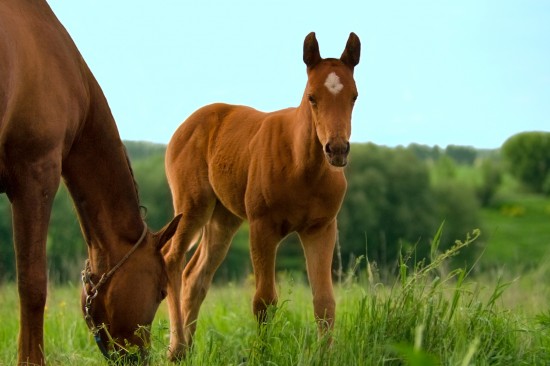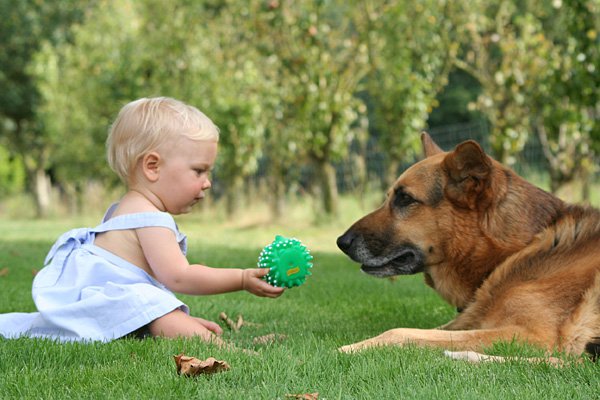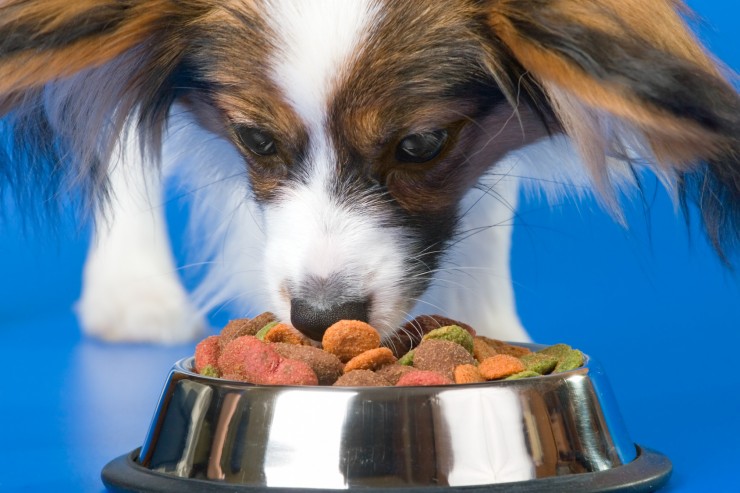

With the spring grasses and the warmer weather comes a few equine illnesses that owners need to watch out for. One of which is equine grass sickness. Horse owners need to evaluate if their horses are indeed at risk and do as much as they can to avoid having to deal with this terrible disease. Vets do not know what causes grass sickness and with the survival rate being low, it can be a very frightening condition to have to cope with.
Although, no one knows why a horse gets grass sickness, it seems to affect younger horses between the ages of two and seven, damaging a horse's nervous system. This controls their involuntary movements and functions, and one of the main symptoms of the disease causes paralysis of the gut.
Grass sickness rears its ugly head during the months of April, May and June. However, it is also prevalent later in the year, when autumn arrives which is when more new grasses appear.
Research has identified three main types of grass sickness which are as follows:
Sadly, both acute and subacute forms of the disease almost always prove to be fatal to horses, whereas a few chronic cases have seen horses make a full recovery.
Studies have showed that a large number of risk factors can be associated with the disease whilst a combination of these factors may also play a role in causing grass sickness, these are as follows:
Although young adult horses from the age of two to seven are considered to be at greater risk, all horses, ponies and donkeys of any age may be affected by grass sickness. A few early studies into the disease reported that heavy draught breeds were more prone to the condition – however, more recent studies have shown this not to be the case.
Equine grass sickness, does however, affect grazing animals. The risks may include any dietary changes or recent movements to a new location or pasture. Another risk factor includes an overly frequent use of horse wormers. With this said, a moderate worm egg count has been associated with a decrease in the risk of a horse becoming ill with grass sickness.
Owners who keep their horses in what is known to be a high risk equine grass sickness area, should discuss the problem with their vet before selecting a worm program so they find best option for their horses. Fields need to be well maintained and horse droppings removed by hand. However, disturbing pastures which includes any construction work like fencing appears to increase the risk of equine grass sickness.
Premises and pastures where incidents of equine grass sickness have occurred means a horse may be more prone to contracting the disease. Premises like livery yards, stud farms and riding schools are more at risk because there is usually soils have higher nitrogen content. Some soil types are also higher risk which includes sand or loan and premises where chickens or fowl are present have been seen to be higher risk.
Although cases of equine grass sickness have been reported throughout the year, most are seen when there's a spurt of new grass which is in the spring, early summer and then again in the autumn. The peak time appears to be in May. However, ground frosts and other sudden changes in the weather have been seen to cause outbreaks of the condition. One study proved that more cases of equine grass sickness happened when the weather was cold and dry which confuses things even more.
Equine grass sickness is a really horrible disease which more often than not proves fatal to many horses in the UK every single year. The acute and the subacute form of the disease often appears to be exactly like a colic. However, the chronic form which is a lot slower at rearing its ugly head, see horses lose weight rather rapidly because very often they have problems swallowing.
The first time the condition was ever reported was in 1909 and the location was Scotland. Since then, the disease has been reported throughout the country. Some studies have shown that horses in the north of England and those kept in Scotland are at higher risk of contracting grass sickness. A lot of research has gone into why horses get this terrible disease but even after decades of studies, it is still not clear just why some horse get it. However, what is clear is the disease is not infectious and cannot be passed from horse to horse.
Studies have shown a horse's nervous system shows signs of changes that are more usually associated with neurotoxins. This discovery has lead researchers to look for neurotoxins in fields where affected horses have grazed. Today, it is thought the condition may be associated with the C botulinum and that horses with lower levels of the antibody against this bacterium were at higher risk of getting the disease. More recently, another researcher found that low levels of antioxidants within a horse's body may also play a crucial role in whether the animal was more susceptible to contracting the disease or not.
If a vet comes to the decision that a horse has indeed got acute equine grass sickness, they will put the animal down to prevent any further suffering.
The symptoms of subacute grass sickness appear to be very similar to those seen in the acute form of the disease. However, they are much less severe. A horse with this form of the disease may not suffer the same accumulation of fluid in their stomachs but the following symptoms will be evident:
Again the outlook for any horse suffering from this form of the disease is never good and usually vets recommend putting the horse down to avoid further suffering.
If a horse suffers from the chronic form of the condition, symptoms appear a lot slower and are much milder. The symptoms to watch out for are as follows:
Horses with this form of the condition stand a much better chance of recovering from the illness.
Horse owners can reduce the risk of their horses getting grass sickness by doing the following:
If you notice your horse showing any of the above symptoms, you need to contact your vet immediately in order for them to diagnose whether or not your horse has contracted equine grass sickness. The earlier a diagnosis is made, the less your horse will have to suffer and if it's the chronic form of the disease, your vet can start a treatment as soon as possible.
 Review Of Holistic Dog Food - - - - So Whats Really The Best?
Looking for the best holistic dog food? Trying to figure
Review Of Holistic Dog Food - - - - So Whats Really The Best?
Looking for the best holistic dog food? Trying to figure
 What Is The Runt Of The Litter ?
What Is The Runt
What Is The Runt Of The Litter ?
What Is The Runt
 Diagnose The Symptoms Of Ulcers In Horses To Treat Them Effectively
Diagnose The Symptoms Of Ulcers In Horses To Treat Them Ef
Diagnose The Symptoms Of Ulcers In Horses To Treat Them Effectively
Diagnose The Symptoms Of Ulcers In Horses To Treat Them Ef
 Six Good Reasons For Feeding The Right Diet For Your Dog’s Age
Six Good Reasons
Six Good Reasons For Feeding The Right Diet For Your Dog’s Age
Six Good Reasons
 Benefits of Buying a Puppy from a Pet Store
Benefits of Buying a Puppy from a Pet Store
If
Benefits of Buying a Puppy from a Pet Store
Benefits of Buying a Puppy from a Pet Store
If
Copyright © 2005-2016 Pet Information All Rights Reserved
Contact us: www162date@outlook.com